The Hidden Cost of Rubber: Uncovering Massive Deforestation and the Role of Advanced Technology
Rubber is all around us—from car tires to everyday products—but what’s the actual cost of this versatile commodity? Behind the scenes, rubber plantations are driving massive deforestation, threatening endangered species, and contributing to climate change. In this blog post, we’ll uncover the hidden environmental toll of rubber production, explore how we can use cutting-edge technology like machine learning and satellite imagery to predict future trends, and discuss how global regulations push businesses toward transparency and sustainability. If you're concerned about the future of our forests, you won’t want to miss this deep dive into the challenges and solutions surrounding rubber-driven deforestation.
SCIENTIFIC INSIGHTS INTO AI AND GEOSPATIAL TECHNOLOGIES
Scott Pezanowski
9/18/20247 min read
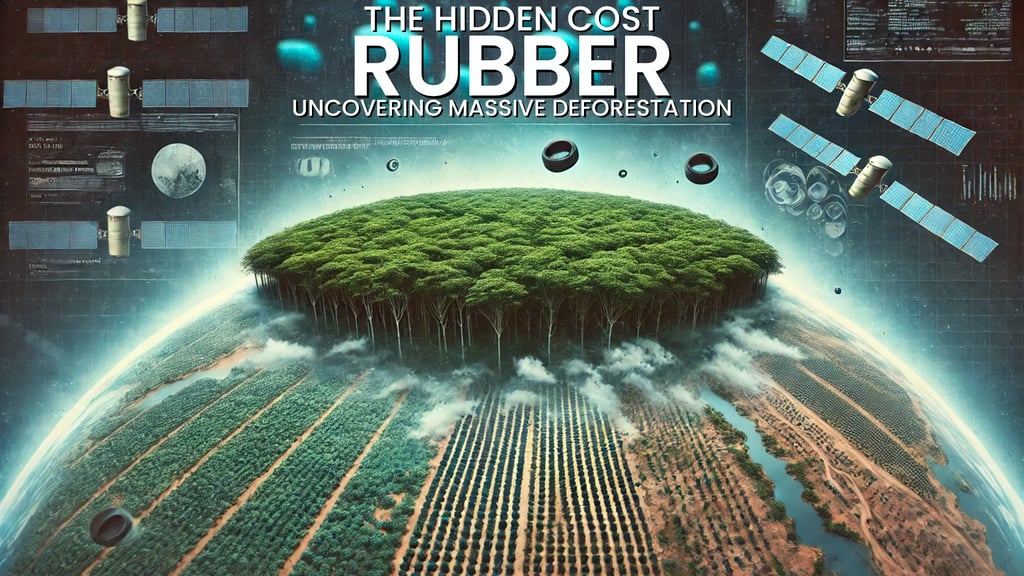

Rubber is present in more places than we realize in our everyday lives—from the tires of our vehicles to the soles of our shoes. Yet, behind this ubiquitous commodity lies a staggering environmental cost: the destruction of tropical forests. Rubber plantations, particularly in Southeast Asia, are causing widespread deforestation, threatening biodiversity, and exacerbating climate change. While many know the impacts of palm oil or beef on deforestation, we often overlook rubber in these discussions.
Recent studies, such as one published in Nature, have provided detailed insights into the accurate scale of rubber-related deforestation. Using high-resolution satellite imagery and Earth observation technology, these studies reveal that current estimates vastly underrepresent the destruction caused by rubber plantations. In this blog post, we’ll explore the findings of these studies, discuss how advanced technologies like machine learning and Earth observation predict future trends in deforestation, and dive into the implications for businesses, governments, and global supply chains.
Rubber Plantations: A Major Driver of Deforestation
Rubber, notably natural rubber, is produced from the Hevea brasiliensis tree, primarily grown in Southeast Asia. It plays an essential role in various industries, especially in the production of tires, which consume over 70% of the world’s natural rubber. While rubber is a renewable resource, the land-use changes associated with expanding rubber plantations are anything but sustainable.
According to the Nature study, more than 4 million hectares of tropical forest have been cleared for rubber plantations since 1993, with most deforestation occurring in countries like Indonesia, Thailand, and Malaysia. What’s more alarming is that much of this deforestation is taking place in Key Biodiversity Areas—regions vital for the survival of endangered species like tigers, orangutans, and elephants.
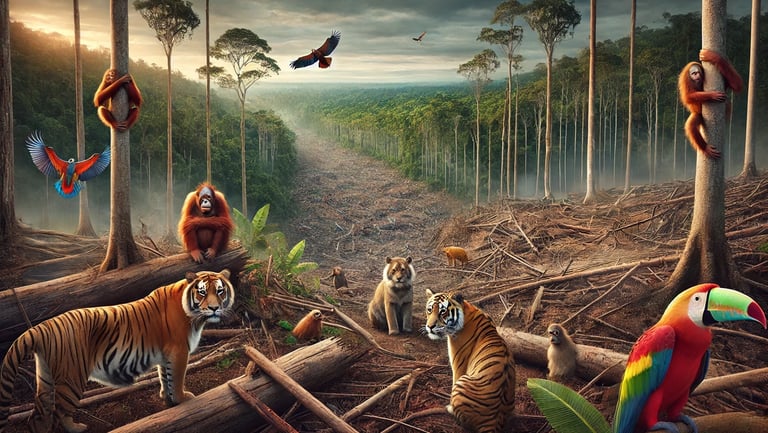

The Technology Behind the Research: Earth Observation and Satellite Imagery
One of the critical breakthroughs in recent research into rubber-related deforestation is using Earth observation technology and high-resolution satellite imagery. Using data from the European Space Agency’s Sentinel-2 satellites and NASA's Landsat satellites for historical imagery, which provide 10-meter resolution imagery, scientists have been able to map rubber plantations across Southeast Asia with unprecedented accuracy.
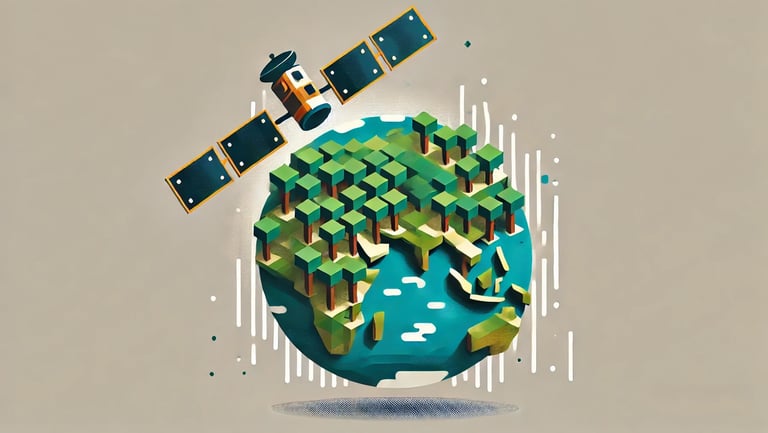

Traditionally, deforestation estimates were based on extrapolated models or national statistics, needing more spatial precision to identify the exact locations and causes of forest loss. With satellite imagery, researchers can distinguish between different vegetation types, allowing them to accurately identify rubber plantations and measure the extent of forest conversion over time.
Machine Learning and Predicting Future Trends in Deforestation
Their research can be extended in multiple ways using AI. By employing machine learning models and advanced data analysis techniques, researchers are now predicting future trends in deforestation related to rubber and other commodities. These models analyze patterns in deforestation data, satellite imagery, and other environmental factors to forecast where future deforestation is likely to occur.
Machine learning excels at identifying trends and anomalies in vast datasets, making it an ideal tool for environmental monitoring. In this case, machine learning models can help predict where rubber plantations are likely to expand and which forests are most at risk. By doing so, governments and conservation organizations can implement targeted policies and interventions to protect vulnerable areas.
The predictive capabilities of machine learning models are becoming increasingly important as the world grapples with climate change and environmental degradation. These models offer valuable insights into the future of land-use changes, allowing decision-makers to take proactive measures to mitigate deforestation.
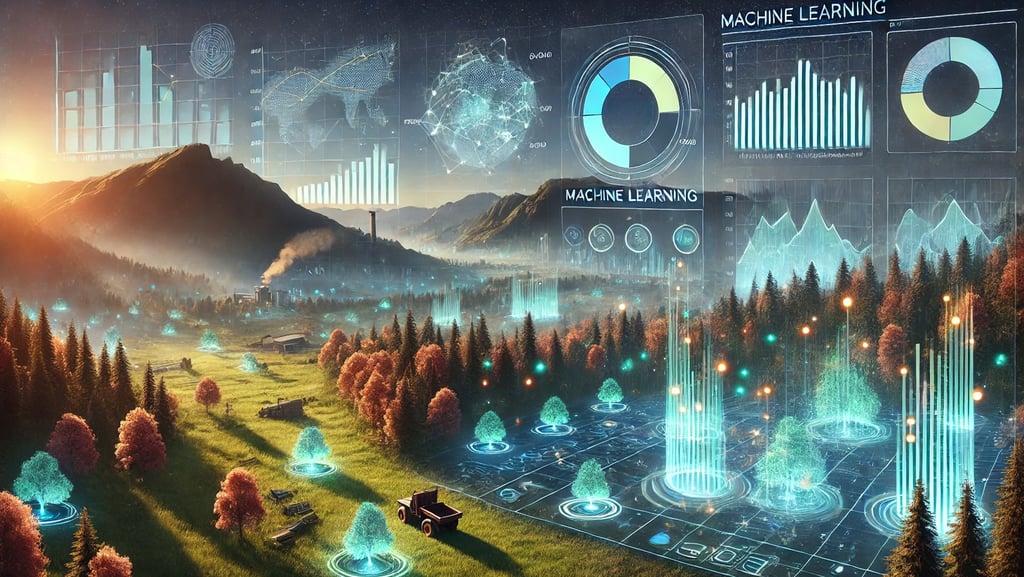

The Role of International Governments and Regulations
While advanced technology is crucial for understanding the scale of deforestation, it’s equally important to address the role of international regulations. Governments and international bodies are beginning to recognize the environmental impact of rubber production, so we need stricter regulations.
Countries in the European Union, for instance, have introduced new due diligence requirements aimed at preventing the import of commodities linked to deforestation, including rubber. These regulations require businesses to prove that their supply chains are deforestation-free and comply with environmental standards. Failure to meet these requirements can result in significant penalties, which puts pressure on businesses to adopt more sustainable practices.
One notable example is the European Union Deforestation Regulation, which mandates that companies importing rubber into the EU ensure their products do not contribute to deforestation. This is a critical step toward ensuring that global supply chains are transparent and sustainable, reducing the environmental impact of rubber production.
Supply Chain Transparency and Accountability
As global regulations tighten, supply chain transparency has become a key focus for businesses producing rubber and other commodities. The complexity of supply chains in the rubber industry presents unique challenges, particularly for smallholder farmers who produce most of the world’s natural rubber. Ensuring traceability from the plantation to the finished product requires innovative solutions.
Blockchain technology and supply chain management platforms are increasingly important in providing visibility into supply chains. By recording every step of the supply chain—from sourcing raw materials to the final product—businesses can demonstrate their compliance with environmental regulations and ensure that their products are ethically sourced.
Moreover, companies are beginning to adopt sustainability certifications to prove that their products meet stringent environmental standards. Certifications like the Global Platform for Sustainable Natural Rubber (GPSNR) are helping businesses align their operations with international sustainability goals while ensuring that consumers can make informed choices.
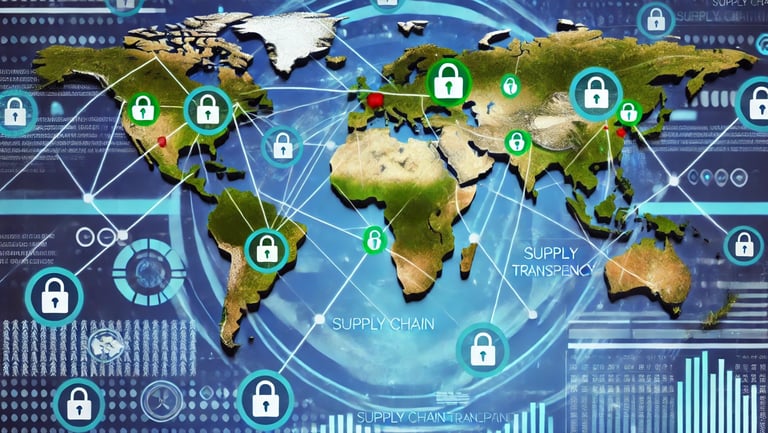

Businesses and the Move Toward Sustainability
The rubber industry faces a significant challenge: balancing economic growth with environmental responsibility. While rubber production is crucial for many economies, particularly in Southeast Asia, the environmental costs cannot be ignored.

Businesses involved in rubber production are likely to face stricter regulations shortly. As countries and international bodies become more aware of rubber's environmental impact, new due diligence requirements will demand more sustainable practices and supply chain transparency. Businesses that fail to comply with these requirements risk losing access to critical markets, such as the European Union, which has already introduced legislation targeting deforestation-linked commodities.
However, the shift toward sustainability is about more than just compliance. Businesses that invest in sustainable practices and supply chain transparency can gain a competitive advantage in a market increasingly concerned about environmental responsibility. Consumers are becoming more discerning about their products, and brands demonstrating their commitment to sustainability are likelier to win consumer trust and loyalty.
How Advanced Technology Can Help
One of the most exciting developments in the fight against deforestation is the use of advanced technology, particularly geospatial analytics and machine learning. By integrating Earth observation data with machine learning models, businesses and governments can monitor deforestation in real time and predict future land-use changes.
Learn more about the Oncilla Geoparsing API
For instance, the Oncilla Geoparsing API, which I developed, unlocks precise location intelligence by transforming text into actionable geographic insights. This tool can help businesses track their supply chains, ensuring their products are sourced from deforestation-free areas. By combining geospatial analysis with natural language processing, businesses can better understand where their raw materials come from and how they impact the environment.
Advanced technologies can monitor deforestation and forecast the environmental impact of future expansion. LSTM (Long Short-Term Memory) models, a machine learning algorithm, can analyze historical data to predict how land use will change in the coming years. These predictions can inform policy decisions, allowing governments and organizations to take proactive measures to protect vulnerable areas.


A Call to Action for Businesses and Policymakers
The deforestation crisis driven by rubber production is a complex challenge that requires coordinated efforts from governments, businesses, and the international community. While advanced technologies like machine learning and Earth observation offer powerful tools for monitoring and predicting deforestation, they must be complemented by solid policies and regulations.
Businesses in the rubber supply chain must prioritize transparency and sustainability to comply with international regulations and build consumer trust. By investing in advanced technologies, businesses can gain insights into their supply chains and ensure that their products are ethically sourced and environmentally responsible.
On the other hand, policymakers must continue pushing for stricter regulations that hold businesses accountable for their environmental impact. The European Union’s deforestation regulations are a step in the right direction. Still, more needs to be done to ensure that rubber production does not come at the expense of our planet’s forests.

If you’re a business or researcher interested in applying advanced technology to monitor deforestation or improve supply chain transparency, I can help.
Reach out. Together, we can make data work for the planet!
Check out the full video for more information on how AI and machine learning applied to remote sensing, Earth observation, and geospatial technologies can improve our World.
I can work with your organization to develop tailored solutions for your unique challenges. Let’s work together to ensure that the future of rubber production is sustainable, transparent, and environmentally responsible.
References
Wang, Y., Hollingsworth, P. M., Zhai, D., West, C. D., Green, J. M. H., Chen, H., Hurni, K., Su, Y., Warren-Thomas, E., Xu, J., & Ahrends, A. (2023). High-resolution maps show that rubber causes substantial deforestation. Nature, 623(7986), 340–346. https://doi.org/10.1038/s41586-023-06642-z



